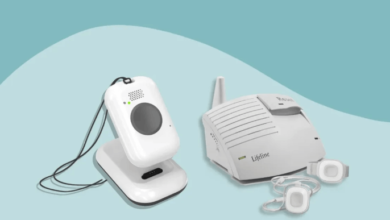The Future of Telecommuting Medical Scribes in the Healthcare Field

The role of telecommuting scribes is increasingly vital in the healthcare industry. By enabling scribes to work from a distance rather than being physically present in facilities, this practice addresses various challenges and creates new opportunities for healthcare professionals. As technology progresses and healthcare systems evolve, the outlook for telecommuting scribing appears promising.
The Growing Need for Medical Scribing Services
There is a rising demand for scribes as healthcare providers face increasing pressure to document interactions accurately. These scribes support healthcare professionals by inputting data into health records (EHRs), allowing physicians to dedicate attention to patient care rather than administrative duties. While this role traditionally took place on-site, it is now transitioning towards arrangements driven by the goals of efficiency, flexibility, and cost-effectiveness.
Technological Progress in Telecommuting Medical Scribing
Advancements play a role in shaping the future of telecommuting medical scribing. With internet connections, secure communication platforms, and advanced EHR systems, remote scribes can efficiently record patient data in time. Furthermore, the development of video conferencing tools improves communication quality between healthcare providers and telecommuting scribes. Using these technologies ensures that documentation quality remains top-notch even when the work is not done in person.
Read also: Cleveland Clinic Abu Dhabi: Pioneering Medical Excellence
Advantages of Remote Medical Scribing
Enhanced Efficiency
A virtual medical scribing advantage is the boost in efficiency it provides. Healthcare professionals can access a pool of scribes without being restricted by geographical boundaries. This wider talent pool facilitates onboarding processes and better matches scribes to medical fields, leading to increased productivity and decreased burnout among healthcare workers.
Cost Efficiency
Remote medical scribing also proves cost-effective. It removes healthcare facilities’ need to allocate space, equipment, or other resources for on-site scribes. Additionally, healthcare providers can cut down on labor expenses by hiring scribes from regions with wage standards while maintaining high-quality work output.
Flexibility and Work-Life Balance
Working remotely offers enhanced flexibility and a better work-life balance for medical scribes. It allows for flexible working hours and reduces commuting time, making it an appealing choice for many individuals. This flexibility could result in job satisfaction. Reduced turnover rates among medical scribes ultimately benefit the entire healthcare system.
Obstacles and Solutions
Sustaining Communication and Collaboration
One significant challenge with scribing is ensuring effective communication and collaboration between healthcare professionals and scribes. When face-to-face interactions are lacking, misunderstandings may arise, potentially leading to errors in documenting patient information. It is important to implement communication tools and protocols to address this issue. Meetings, thorough onboarding processes, and ongoing training sessions can help integrate remote scribes into the healthcare team. Establishing channels of communication and feedback systems is essential for maintaining documentation standards and fostering collaboration.
Data security is critical to the healthcare sector, especially with remote medical scribing, where concerns about safeguarding sensitive patient data are raised. Strict security measures must be implemented to ensure data protection in a work setting. Encryption techniques, secure VPNs, and adherence to healthcare regulations such as HIPAA can help secure information. Healthcare providers should ensure that all remote scribes follow these security protocols and undergo training to stay updated on evolving security standards.
Dealing with the diversity of Electronic Health Record (EHR) systems used across healthcare facilities poses another challenge for scribes who must be proficient in multiple platforms. Offering training on EHR systems and providing ongoing education for scribes are crucial steps in addressing this complexity. Creating training programs designed for EHR platforms can help scribes adjust rapidly and effectively. Moreover, healthcare providers can aim to standardize EHR systems to address this issue.
The Importance of Education and Training
Education and training play a role in the future of medical scribing. Training programs must evolve as the role progresses to prepare scribes for their duties. A comprehensive education covering terminology, navigating EHR systems, and adhering to data security protocols will be crucial. Additionally, continuous professional development opportunities can assist scribes in staying up to date with industry changes and technological advancements.
Incorporation with Telemedicine
The emergence of telemedicine has impacted the direction of scribing. Telemedicine enables healthcare providers to deliver services to patients without visits. With the growth of telemedicine comes an increased demand for scribes capable of documenting virtual patient interactions in real-time. Remote scribes can smoothly integrate into telemedicine platforms, ensuring the recording of all elements of encounters. This integration is essential for upholding continuity and quality of care within a healthcare setting.
Upcoming Trends in Remote Medical Scribing
Adoption of Voice Recognition Technologies
Voice recognition technology is swiftly establishing itself as a tool for inscribing. While humans still need to oversee for accuracy, these technologies can assist in the documentation process, enabling scribes to check and refine the content for precision. Combining voice recognition with scribing can boost efficiency and lighten the workload for scribes.
Broadening Range of Duties
As medical scribing progresses, scribes’ responsibilities may extend to tasks beyond documentation. Scribes might help with duties, patient scheduling, and even initial patient evaluations supervised by healthcare professionals. This broader scope would enable healthcare teams to function and share responsibilities effectively. Thanks to work capabilities, medical scribes can be based globally. This creates opportunities for collaboration, allowing healthcare providers to collaborate with scribes who offer different perspectives and expertise. This worldwide approach could encourage innovation in patient care documentation and enhance healthcare delivery.
Conclusion
The future of scribing in the healthcare sector is set for substantial growth and transformation. With advancements in comprehensive training programs and the integration of telemedicine, remote medical scribes will continue to enhance the healthcare industry. Tackling communication issues, safeguarding data, and effectively adapting EHR systems are essential for maximizing the benefits of scribing. In the changing healthcare environment, remote medical scribing, including data entry for hospitals, offers an avenue to boost productivity, lessen administrative tasks, and ultimately elevate the quality of patient care.




